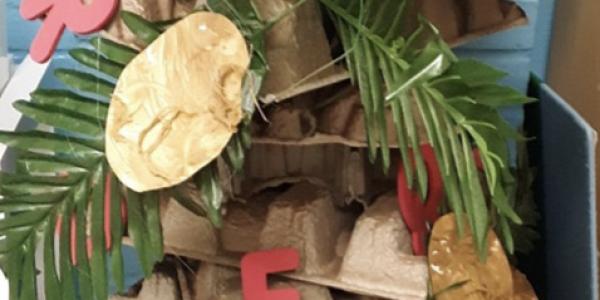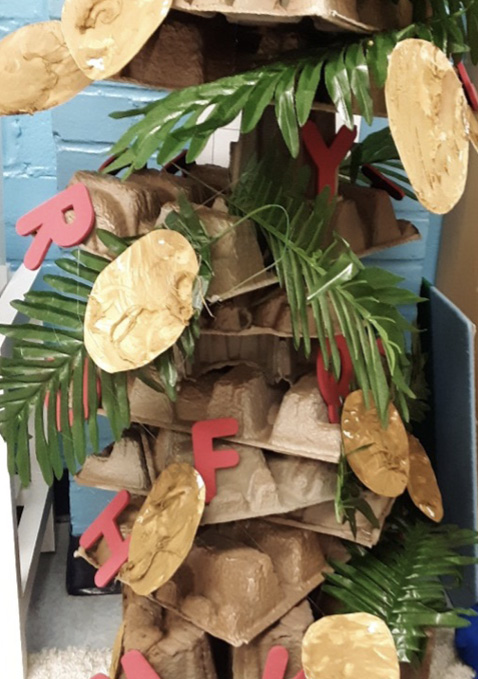DAP and Playful Learning: Equitable Approaches

You are here
Play can be a mystery to families. Some children talk about play so generally that families have no idea what their children actually spend time doing at school.
Adult: How was your day at preschool?
Preschooler: Good.
Adult: What did you do?
Preschooler: I played.
When children offer details, what they actually did can be equally mysterious.
Adult: How was your day at preschool?
Preschooler: Good.
Adult: What did you do?
Preschooler: I played invisible witch.
Adult: How was your day at preschool?
Preschooler: Good.
Adult: What did you do?
Preschooler: Curious told me motorcycles aren’t scary.
Adult: Who is Curious?
Preschooler: My new friend.
Play is one of the richest experiences inside and outside of early learning settings; understanding play sets early childhood educators apart. It takes professional knowledge, experiences, and beliefs to recognize what play is, to interpret what play means, and to respond in ways that foster play and playful learning. It takes these qualities to understand how children’s, families’, and educators’ social, historical, and cultural contexts influence play. Every child brings funds of knowledge to their play, but not every child experiences equitable access to and practices for play. Early childhood educators also regularly face “either/or” viewpoints or pressures about the role of play in teaching and learning.
Play may seem simple—children just do it—but understanding how children learn from play is indeed complex, as are the issues that surround and impact play in early childhood. That is why an early childhood educator’s understanding of “I played” is a critical part of developmentally appropriate practice (DAP) and why “play is essential for all children, birth through age 8.” This issue of Young Children delves into different aspects of play and different roles of educators during play. Threaded throughout the cluster and the special NAEYC News section, the issue also focuses on the consideration of and responsiveness to the contexts of children and families with play.
Opening this cluster is a foundational piece by Jennifer M. Zosh, Caroline Gaudreau, Roberta Michnick Golinkoff, and Kathy Hirsh-Pasek. In an excerpt from their chapter, “The Power of Playful Learning in the Early Childhood Setting” in NAEYC’s recently published book Developmentally Appropriate Practice in Early Childhood Programs Serving Children from Birth Through Age 8, Fourth Edition, the authors define playful learning, why it is so important, and the distinguishing features and examples involved in the spectrum of play.
With this foundation set, the remaining articles explore play in settings with very young children to students in higher education. In “ ‘Vroom, Vroom, Beep, Beep’: Promoting Equity with Stories Children Tell Through Truck and Car Play,” Mary Ellin Logue, Hattie Harvey, and Amanda Beckett present their journey of inquiry into children’s play with vehicles. Spurred by observation and reflection, they transformed their teaching practices to acknowledge and incorporate children’s funds of knowledge in play and language.
Turning the focus outside, Hsiu-Wen Yang, Michaelene Ostrosky, Paddy Cronin Favazza, Yusuf Akemoğlu, W. Catherine Cheung, and Katherine Aronson-Ensign write about “Outdoor Recess Matters! Preventing and Reducing Children’s Challenging Behavior on the Playground.” Following a preschool teacher in an inclusive setting, the authors outline the challenging behaviors that can occur for children with and without disabilities during recess. They detail a wide-ranging approach for preventing and responding to challenging behaviors during this play-filled part of the day.
In “Through a Child’s Eyes: Using Floor Play to Connect with Children and Families,” Kathleen I. Harris offers a look into floor play with children and adults. She describes the benefits of this type of play and describes how, through a workshop format, early childhood educators can share floor play with families as a way to follow their children’s interests and encourage engagement and learning together.
Sharing play with adults is extended to higher education in an article by Melanie Loewenstein, Toni Denese Sturdivant, and Josh Thompson. “Learning Through Play in Teacher Education” explores playful learning as a transformative means to introduce and deepen preservice teachers’ perspectives and practices and to advance equity for young children. The authors present a “both/and” approach to child-directed play and teacher-directed instruction as current and future educators navigate standards-based expectations and approaches. This idea is expanded in an accompanying piece by Ijumaa Jordan, “Both/And: Early Childhood Education Needs Both Play and Equity.”
Closing the cluster is a piece devoted to the youngest learners. An excerpt from their recently published NAEYC book, Infants and Toddlers at Play: Choosing the Right Stuff for Learning and Development, Mary Benson McMullen and Dylan Brody offer “The What and How of Using Play Materials: Supporting Learning, Development, and Well-Being in Birth to Age 3” as a way to determine the “right stuff” for supporting learning and development through play for the four different periods of a child’s first 36 months of life.
Just as McMullen and Brody invite infant and toddler educators to reflect more deeply on how meaningful and appropriate play materials are for each and every child, we invite you to consider the range of play practices and materials in your setting through the lens of DAP and equity. With a professional eye toward play, what does “I played” mean in your setting, and where are opportunities for transformation? We hope this issue offers you a rationale and practical steps to answering these questions.
Annie Moses,
YC Editor in Chief
 To culminate a study of Bill Martin Jr.’s Chicka Chicka Boom Boom, children in a 4-year-old class built their own coconut tree with recyclable materials, foam letters, and “coconuts” they created in the art center.
To culminate a study of Bill Martin Jr.’s Chicka Chicka Boom Boom, children in a 4-year-old class built their own coconut tree with recyclable materials, foam letters, and “coconuts” they created in the art center.
Would you like to see your children’s artwork featured in these pages? For guidance on submitting print-quality photos (as well as details on permissions and licensing),
see NAEYC.org/resources/pubs/authors-photographers/photos.
 We’d love to hear from you!
We’d love to hear from you!
Send your thoughts on this issue, and on topics you’d like to read about in future issues of Young Children, to [email protected].
Photographs: Courtesy of the authors
Copyright © 2022 by the National Association for the Education of Young Children. See Permissions and Reprints online at NAEYC.org/resources/permissions.
Annie Moses, PhD, is director of periodicals at NAEYC and serves as editor in chief of Young Children and Teaching Young Children.
